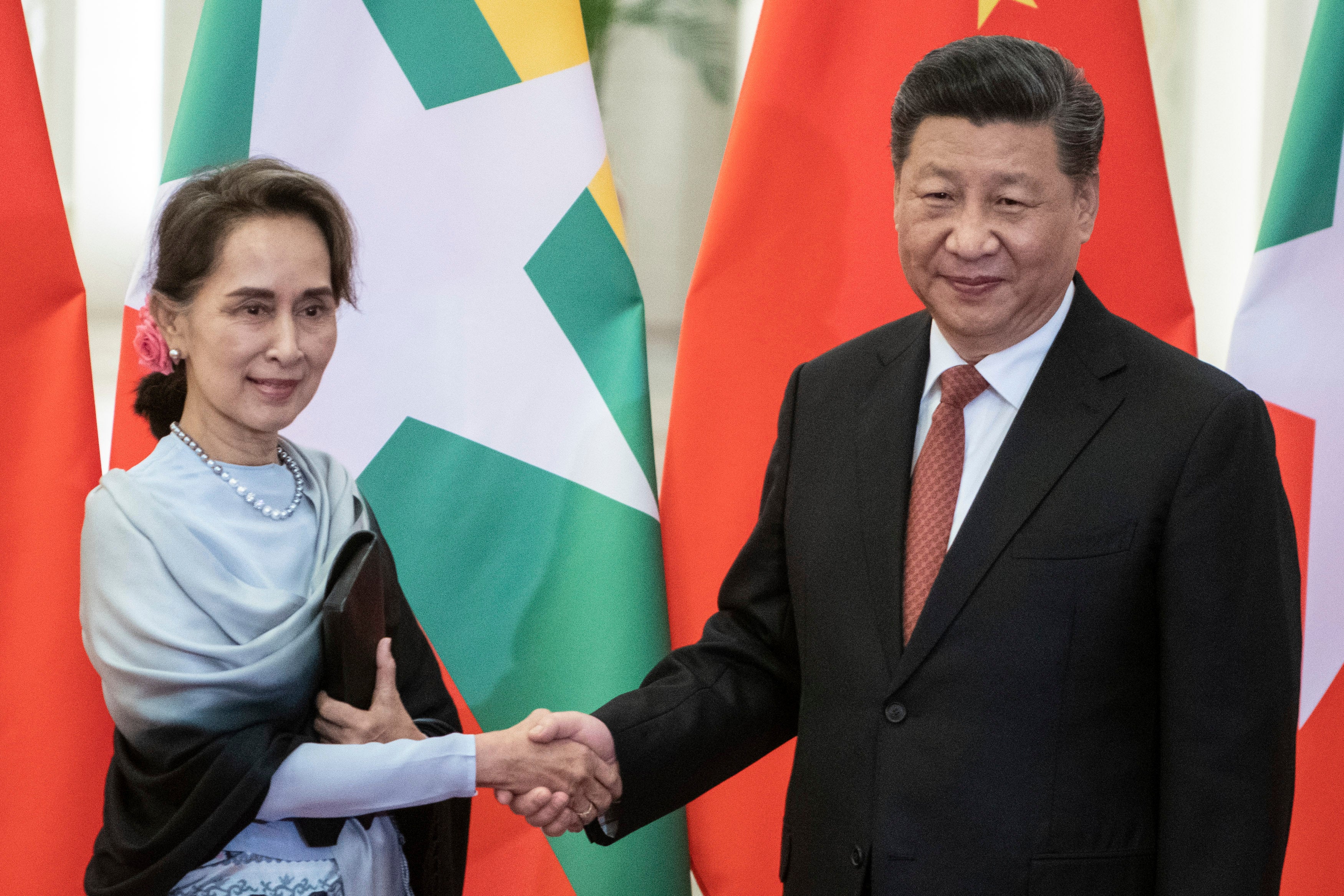The China Factor: Analyzing Challenges For BMW, Porsche, And Other Auto Brands

Table of Contents
Intense Domestic Competition
The rise of domestic Chinese automakers is a primary challenge for international brands. These companies are rapidly gaining market share, forcing established players to adapt or risk being left behind.
Rise of Domestic Brands
Chinese automakers like BYD, Geely, and Nio are rapidly innovating, producing high-quality vehicles at competitive prices, significantly impacting foreign brands' market share. Their success stems from several key factors:
- Technological advancements in EVs: Chinese brands are at the forefront of electric vehicle (EV) technology, offering competitive models with advanced features and longer ranges. This is particularly impactful given the growing preference for EVs in China.
- Aggressive pricing strategies: Domestic brands often undercut foreign competitors on price, making their vehicles more accessible to a wider range of consumers.
- Strong government support: The Chinese government actively supports the development of the domestic automotive industry through subsidies, tax breaks, and favorable regulations.
- Increasing brand loyalty among Chinese consumers: A growing number of Chinese consumers are showing preference for domestic brands, recognizing their improved quality and features.
Understanding Consumer Preferences
Shifting consumer preferences in China demand significant adaptation from international brands. The demand for electric vehicles (EVs), SUVs, and vehicles equipped with advanced connected car technologies is rapidly accelerating.
- Need for localized R&D: Foreign automakers need to invest heavily in research and development tailored to the specific needs and preferences of Chinese consumers.
- Adapting marketing strategies to resonate with Chinese consumers: Marketing campaigns must be culturally sensitive and utilize platforms and channels preferred by Chinese consumers.
- Integrating preferred digital platforms: Leveraging popular digital platforms like WeChat and Alibaba is essential for reaching and engaging Chinese consumers effectively.
Navigating Regulatory Hurdles
China's automotive industry is subject to stringent regulations, posing significant challenges for international brands.
Stringent Emission Standards
China's increasingly strict environmental regulations and emission standards necessitate substantial investment in cleaner technologies and manufacturing processes.
- Compliance costs: Meeting these standards requires considerable investment in new technologies and infrastructure.
- R&D for EVs and hybrid vehicles: Companies must prioritize research and development of electric vehicles and hybrid models to meet emission targets.
- Adapting supply chains for greener materials: Supply chains need to be adapted to source and utilize more environmentally friendly materials.
Trade Tensions and Tariffs
Geopolitical tensions and fluctuating trade policies create uncertainty and impact pricing, production, and supply chain stability.
- Potential tariffs and import duties: International brands face the risk of increased tariffs and import duties, impacting their competitiveness.
- Supply chain diversification strategies: Companies are forced to diversify their supply chains to mitigate risks associated with trade tensions.
- Navigating complex trade agreements: Understanding and complying with complex trade agreements is crucial for smooth operations.
Supply Chain Disruptions
Global supply chain disruptions continue to pose significant challenges for the automotive industry in China.
Global Chip Shortages
The ongoing global semiconductor shortage continues to disrupt production schedules and impact vehicle availability.
- Strategic sourcing of components: Automakers need to develop strategies for securing crucial components, including semiconductors.
- Exploring alternative suppliers: Diversifying supplier bases is essential to mitigate the risk of shortages.
- Potential for production delays and lost revenue: Supply chain disruptions lead to production delays and lost revenue for automakers.
Logistics and Infrastructure
Challenges related to logistics, infrastructure, and transportation can add to overall costs and production complexities.
- Port congestion: Port congestion in major Chinese ports can cause delays and increase transportation costs.
- Transportation costs: Efficient and cost-effective transportation within China is crucial for smooth operations.
- Efficient supply chain management within China: Robust supply chain management is critical to navigate the complexities of the Chinese logistics network.
Maintaining Brand Image and Luxury Positioning
The Chinese luxury market is highly competitive and requires a nuanced understanding of consumer preferences.
Luxury Market Dynamics
The Chinese luxury market is evolving rapidly, demanding unique marketing strategies and product offerings.
- Brand building and reputation management in China: Maintaining a strong brand image and reputation is paramount in the competitive Chinese luxury market.
- Adapting product lines to local tastes: Product offerings must be tailored to suit the preferences of affluent Chinese consumers.
- Understanding cultural nuances: Understanding cultural nuances and sensitivities is crucial for effective marketing and brand building.
Digital Marketing and Engagement
Effective digital marketing and social media strategies are critical for reaching and engaging Chinese consumers.
- WeChat marketing: Leveraging WeChat, a dominant social media and messaging platform in China, is essential.
- Targeted online advertising: Targeted online advertising campaigns can reach specific consumer segments effectively.
- Leveraging social media influencers: Collaborating with influential social media personalities can significantly boost brand awareness.
Conclusion
The "China factor" presents significant challenges for BMW, Porsche, and other international auto brands. Successfully navigating this complex landscape requires strategic adaptation, significant investment in R&D and localization, robust supply chain management, and a keen understanding of the evolving Chinese automotive market and consumer preferences. Ignoring these challenges risks losing market share and profitability in the world's most important automotive market. To thrive in this dynamic environment, brands must proactively address the "China factor" with a comprehensive, long-term strategy focused on innovation, localization, and consumer understanding. Understanding the China Factor is no longer an option, but a necessity for survival and success in the global automotive industry.

Featured Posts
-
 Tom Cruises 1 Debt To Tom Hanks Will He Ever Pay Up
May 16, 2025
Tom Cruises 1 Debt To Tom Hanks Will He Ever Pay Up
May 16, 2025 -
 Dealerships Renew Fight Against Ev Sales Requirements
May 16, 2025
Dealerships Renew Fight Against Ev Sales Requirements
May 16, 2025 -
 Stock Market Valuation Concerns A Bof A Analysis For Investors
May 16, 2025
Stock Market Valuation Concerns A Bof A Analysis For Investors
May 16, 2025 -
 Vercel Fights Back Against La Ligas Internet Censorship Measures For Piracy
May 16, 2025
Vercel Fights Back Against La Ligas Internet Censorship Measures For Piracy
May 16, 2025 -
 En Directo Almeria Contra Eldense La Liga Hyper Motion
May 16, 2025
En Directo Almeria Contra Eldense La Liga Hyper Motion
May 16, 2025
Latest Posts
-
 Paddy Pimblett Ufc 314 And The Liverpool Fc Scheduling Conflict
May 16, 2025
Paddy Pimblett Ufc 314 And The Liverpool Fc Scheduling Conflict
May 16, 2025 -
 Ufc 314 Pimbletts Path To A Championship Contender Spot Via Chandler Fight
May 16, 2025
Ufc 314 Pimbletts Path To A Championship Contender Spot Via Chandler Fight
May 16, 2025 -
 Paddy Pimblett Targets Ufc Title Shot After Chandler Fight At Ufc 314
May 16, 2025
Paddy Pimblett Targets Ufc Title Shot After Chandler Fight At Ufc 314
May 16, 2025 -
 Paddy Pimbletts Bold Prediction Ufc 314 Showdown With Chandler And The Title Shot
May 16, 2025
Paddy Pimbletts Bold Prediction Ufc 314 Showdown With Chandler And The Title Shot
May 16, 2025 -
 Paddy Pimbletts Unbeaten Run Adesanyas High Praise And Upcoming Chandler Fight
May 16, 2025
Paddy Pimbletts Unbeaten Run Adesanyas High Praise And Upcoming Chandler Fight
May 16, 2025
